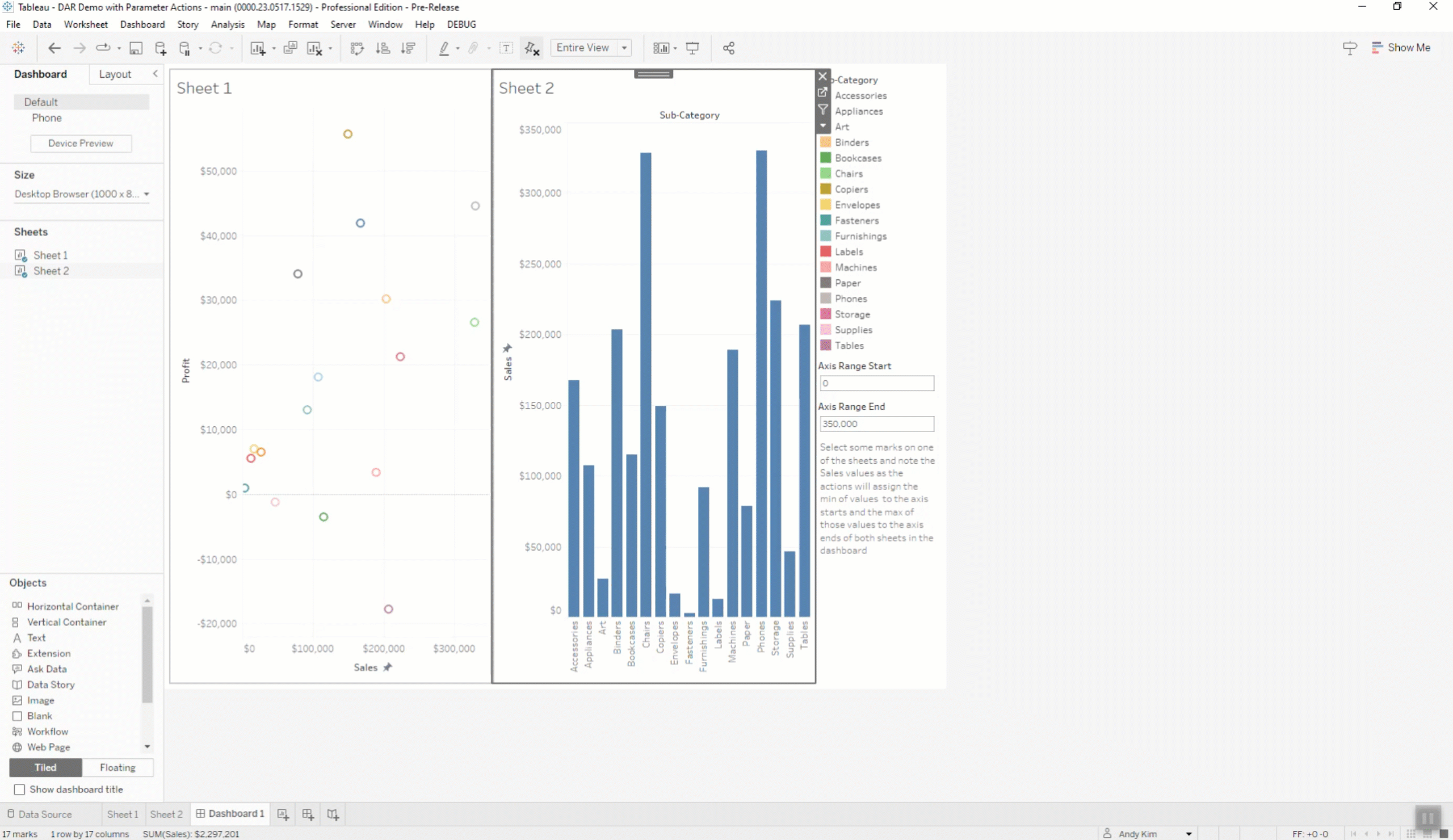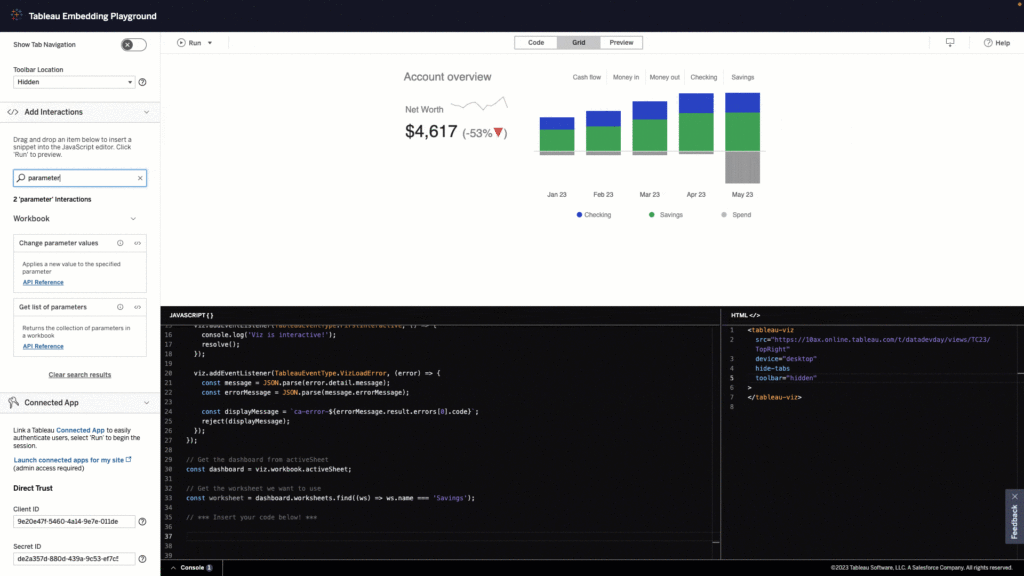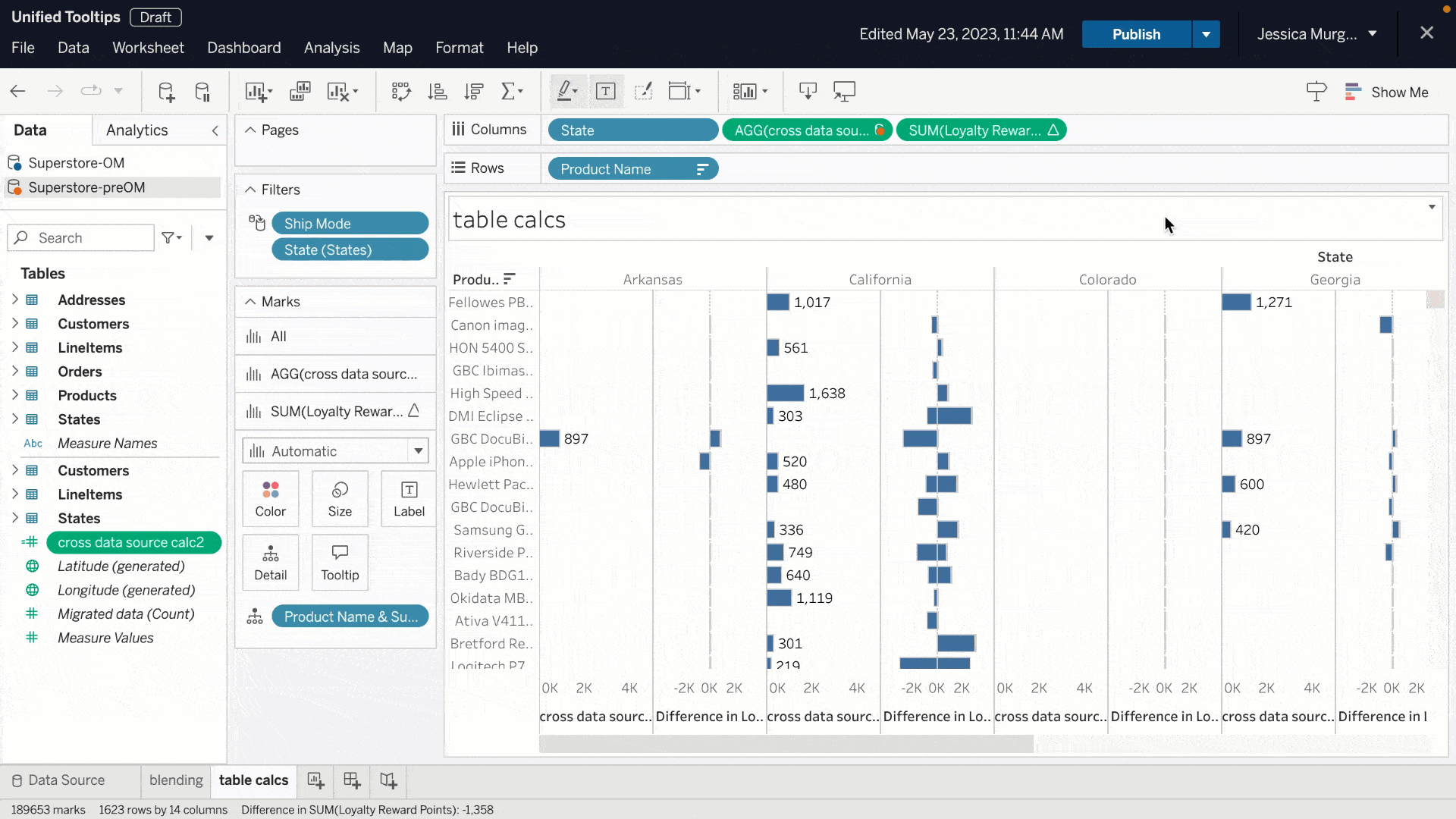It’s that time of the year again. The days are getting shorter, the nights are getting colder and if you live in the Netherlands, the kruidnoten are already in the supermarkets. This can only mean one thing: Tableau 2023.3 is coming soon. What can we expect? Here are some interesting new features.
New features on Tableau 2023.3
Every three months, Tableau releases new features for their products. Now if you, like me, are mostly working on the more front end side of Tableau, not all of these new features will mean a whole lot to you. Added connector support to specific software, API stuff or improved background processes will surely help some Tableau users. However, it’s the day-to-day stuff that most Tableau users will look forward to. Here’s a list of some of those features.
Dynamic Axis ranges
Previously, manually setting the axis range in Tableau would override the standard range that Tableau picks based on the values of a visualisation. Coming in 2023.3 we get a new possibility: dynamic axis ranges. Adjust the axis of a given visualisation using the value of parameters to create more dynamic visualisations. This allows you to change perspective and really highlight differences in your visualisation. It also means that parameter actions are now even more powerful in analysing and comparing data.

Tableau Cloud add-on for Google Workspace
The Google Workspace (with Drive, Docs, Gmail etc.) is a very popular and powerful tool for sharing information, much like Tableau. With the new add-on, you can combine the two! Add links to Tableau-dashboards in a Google Doc, and the user will be shown a preview of the dashboard as a tooltip. This preview contains the latest information as well as its name and the date of the latest update. Of course you can open the dashboard in your Tableau Cloud environment with a single click. Sharing information and collaborating was never easier!
Embedding playground
So you’ve created a nice visualisation, but now you just want to show it on your website without having to load an entire Tableau Public frame. Sadly Tableau wasn’t always well known for ease with which you could show its contents outside of Tableau environments. But with the Embedding Playground, announced during the Tableau Conference in May this year, this will change. You can easily learn how to develop custom code to incorporate your viz on your website. Using the familiar Tableau interface to create the visualisation you want, the playground transforms your viz into code on the spot, so you can export the code and share your interactive visualisations with the world.

Autosave enhancements
Previously, Tableau would only autosave changes on workbooks that had already been published previously. But if you are starting from scratch to quickly draw up some visualisations, you may decide not to publish your work only to regret it later. Now, Tableau will also automatically save changes you make in a new workbook that hasn’t been published yet. This will allow you to start and stop working on a workbook, and to come back to make changes to it without having to publish it first. Then, only when you think your draft deserves a name, you can publish it.
Previously on 2023.2, now on Tableau Server 2023.3
Some of the previously released features had not yet been available for Tableau Server users. Coming on Tableau Server 2023.3, these are some interesting features you might look forward to using as well.
Line patterns
Line charts are one of the most popular charts in the world, especially for time-related data. But apart from colours and sizes, there weren’t many ways to change the line’s appearance out of the box. Of course, Tableau wouldn’t be Tableau if there weren’t a dozen ways to work around this problem, but luckily for us, Tableau has added a new feature of choosing a line pattern. Instead of a continuous line, you can now also choose between short stripes or a dotted line to differentiate between marks.
Unified tooltips
What’s going on with the warning on that field in my viz? What was the original field name? Or what’s the logic behind this calculation? Simple questions, that were once too difficult to answer. But not anymore! Unified tooltips are a new way to empower Tableau users and simply give them the information they need when they need it. Just hover over a field on any of the shelves to find out what you want to know. And then use you precious time to focus on the important stuff.

Enhanced Image Roles
Image Roles were first announced on Tableau 2022.4, but already have been upgraded in the most recent version of Tableau. In Tableau 2023.3 Tableau Server users will also be able to use these upgrades, like expanded image file support, a higher number of images per column (100!) and increased image size up to 200kb. So you can finally create that table with the 100 most polular gifs, their origin and use through time!
Curious to know more about the upcoming changes? Have a look at at the Tableau website for the comprehensive overview of all new features on Tableau 2023.3.
Thank you for reading this blog. Also check out our other blogs page to view more blogs on Tableau, Alteryx, and Snowflake.
Work together with one of our consultants and maximize the effects of your data.
Contact us, and we’ll help you right away


